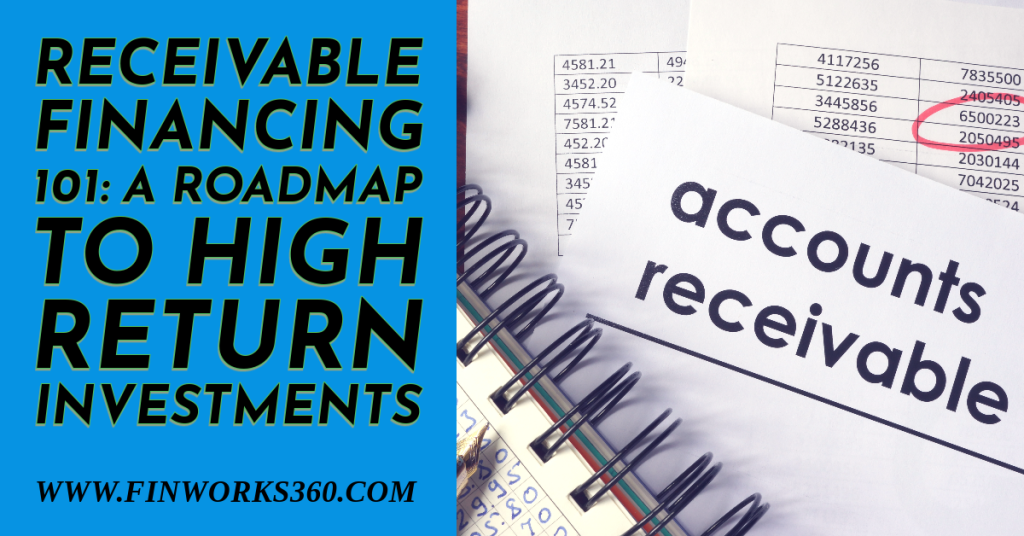In the world of finance and investment, one of the most promising avenues for high returns is receivable financing.
If you’re looking to grow your wealth and make the most of your financial assets, this comprehensive guide will serve as your roadmap to understanding and harnessing the potential of receivable financing as a high-return investment strategy.
Understanding Receivable Financing
Receivable financing, also known as accounts receivable financing or invoice financing, is a financial technique used by businesses to convert their outstanding invoices into immediate cash.
This process is especially beneficial for businesses that have a significant amount of accounts receivable but require cash flow for their day-to-day operations, expansion plans, or other financial needs.
The Mechanics of Receivable Financing
Here’s how receivable financing typically works:
- Invoice Creation: A business delivers goods or services to its clients and issues an invoice with payment terms.
- Invoice Submission: Instead of waiting for the client to pay the invoice, the business can submit it to a receivable financing provider.
- Funding: The financing provider advances a significant portion of the invoice’s value to the business, usually around 80-90% of the total invoice amount.
- Client Payment: When the client pays the invoice, the financing provider deducts a small fee and transfers the remaining amount to the business.
The Benefits of Receivable Financing
- Improved Cash Flow: Receivable financing provides businesses with immediate access to cash, which can be used for operating expenses, payroll, or other business investments.
- Risk Mitigation: It helps reduce the risk associated with non-payment or late payment of invoices by transferring the responsibility to the financing provider.
- Scalability: Businesses can scale their operations and take on larger clients or projects without worrying about cash flow constraints.
- Quick Access to Capital: Traditional bank loans can be time-consuming and have stringent requirements. Receivable financing offers a faster and more flexible solution.
- High Returns: With faster access to capital and reduced financial stress, businesses can take advantage of growth opportunities and potentially earn high returns.
Is Receivable Financing Right for You?
Receivable financing isn’t just for large corporations. It can be a valuable tool for small and medium-sized businesses looking to improve their financial position. Here are some key considerations:
- Invoice Volume: If your business regularly generates a substantial number of invoices, receivable financing can be highly beneficial.
- Cash Flow Needs: If your business experiences cash flow gaps, especially while waiting for clients to pay their invoices, receivable financing can help bridge those gaps.
- Growth Aspirations: If you’re looking to expand, take on new clients, or invest in opportunities that require capital, receivable financing can be a strategic choice.
- Creditworthiness: Unlike traditional loans, receivable financing is more concerned with the creditworthiness of your clients than your own credit history.
Steps to Get Started
If you’re interested in leveraging receivable financing as a high-return investment, follow these steps:
- Identify a Reliable Financing Provider: Research and select a reputable receivable financing provider with a track record of helping businesses achieve their financial goals.
- Evaluate Costs: Understand the fees associated with receivable financing, including discount fees and any additional charges. Make sure you’re comfortable with the costs involved.
- Submit Invoices: Begin by submitting your invoices to the financing provider, which will then advance a percentage of the invoice amount to you.
- Manage Client Relationships: While the financing provider handles the financial aspects, maintain positive relationships with your clients to ensure smooth invoice payments.
- Reinvest Wisely: Use the cash received to enhance your business operations, take on new opportunities, and ultimately earn high returns on your investments.
In Conclusion
Receivable financing is not just a financial lifeline; it’s a roadmap to high-return investments. It empowers businesses of all sizes to access capital quickly, manage cash flow efficiently, and pursue growth opportunities without the stress of late payments.
If you’re considering an investment strategy that offers substantial returns while minimizing risk, receivable financing is a compelling option to explore.
Make sure to partner with a reputable financing provider, and you’ll be on your way to maximizing the potential of your business.
Finworks360 provides a high-return investment opportunity. Contact now.

